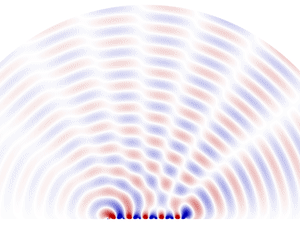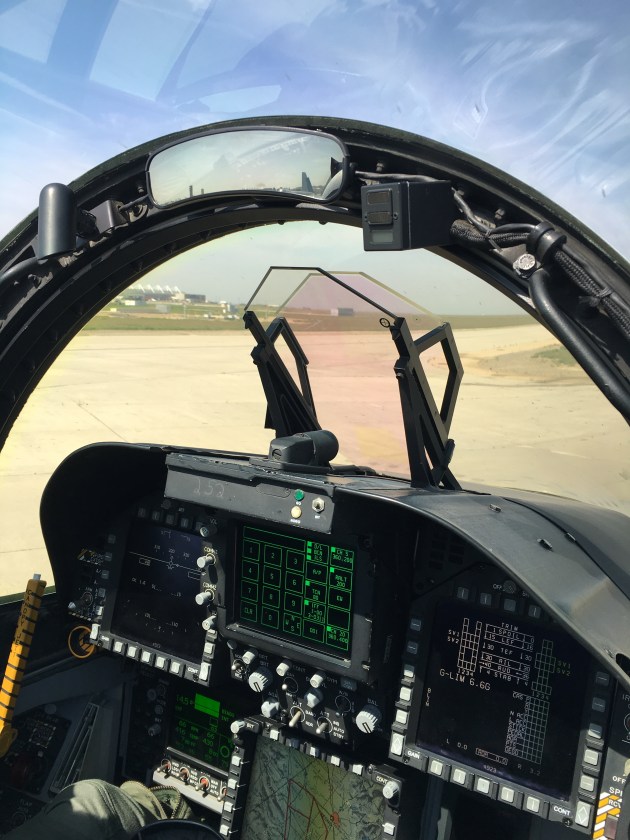Gaspa
Member
I took some time to get up to speed on the topic, but forgive me if I bring up something that has been discussed before or make useless repeated comments. I went through the first two pages and the final few, I hope it's fine that I haven't read through every word of this 5-year-old 900+ comment thread.
Some phased array systems also have a sweeping frequency, like in the image below.

This one seems to be able to track a number of objects, as in, it can lock a beam at an object to track it continuously.
Anyway, since the claim is that this 0.78 sec time was figured out from looking at logs on the next day, the data-logging system must have a sampling rate of some sort. Knowing it could be useful.
It would be one thing to have a target detected at around 28k feet for a few seconds and then, the very next log entry, which happens 0.78s after the previous one, have it detected at close to sea level.
Another thing would be to have, say, a 0.01 second period, or 100Hz sample rate of the log, with it showing the target being tracked as it zips down like the graph below.

Another possibility, which I find to be more likely than the second option, is that the object wasn't actually tracked. The sample period could be some fraction of 0.78 seconds. There was a detection at 28k (or 80k, or 60k, it depends where you're looking or who you're listening to) feet for some time, then nothing for a few samples, and then another detection at close to sea level.
The first and third possibilities are explainable by reflection or weather phenomena, the second one would support the "impossibly fast movement" story. Anything in between is murky.
I don't think these logs are likely to be retrievable by now, or that we should trust anyone's memory about what exactly the data looked like.
Going over the executive report, where it described detection by the AN/SPY-1 scanner, it describes:
Not in this case. The SPY-1 radar is phased array, no rotation.
I don't think the 0.78 seconds figure occured three different times. It's just three retellings of the same story.
Some phased array systems also have a sweeping frequency, like in the image below.

This one seems to be able to track a number of objects, as in, it can lock a beam at an object to track it continuously.
Anyway, since the claim is that this 0.78 sec time was figured out from looking at logs on the next day, the data-logging system must have a sampling rate of some sort. Knowing it could be useful.
It would be one thing to have a target detected at around 28k feet for a few seconds and then, the very next log entry, which happens 0.78s after the previous one, have it detected at close to sea level.
Another thing would be to have, say, a 0.01 second period, or 100Hz sample rate of the log, with it showing the target being tracked as it zips down like the graph below.
Another possibility, which I find to be more likely than the second option, is that the object wasn't actually tracked. The sample period could be some fraction of 0.78 seconds. There was a detection at 28k (or 80k, or 60k, it depends where you're looking or who you're listening to) feet for some time, then nothing for a few samples, and then another detection at close to sea level.
The first and third possibilities are explainable by reflection or weather phenomena, the second one would support the "impossibly fast movement" story. Anything in between is murky.
I don't think these logs are likely to be retrievable by now, or that we should trust anyone's memory about what exactly the data looked like.
Going over the executive report, where it described detection by the AN/SPY-1 scanner, it describes:
Highlighted text suggests the nice smooth tracking graph is unlikely, to say the least.According to Senior Chief [redacted], the AAVs [Anomalous Aerial Vehicle, i.e., the UFO] would descend from a very high altitude into the scan volume of the AN/SPY-1 at a high velocity. (...) Senior Chief [redacted] added that based on his experience, (...), the AAV exhibited Ballistic Missile Characteristics in reference to its appearance, velocity, and indications on the radar. Since the radar wass in the mode to handle Air Intercept of conventional aircraft it never obtained an accurate track of the AAVs and was quickly "dropped" by the radar meaning it was eliminated by the computer to reduce the amount of clutter on the radar, as any other false target is handled.

